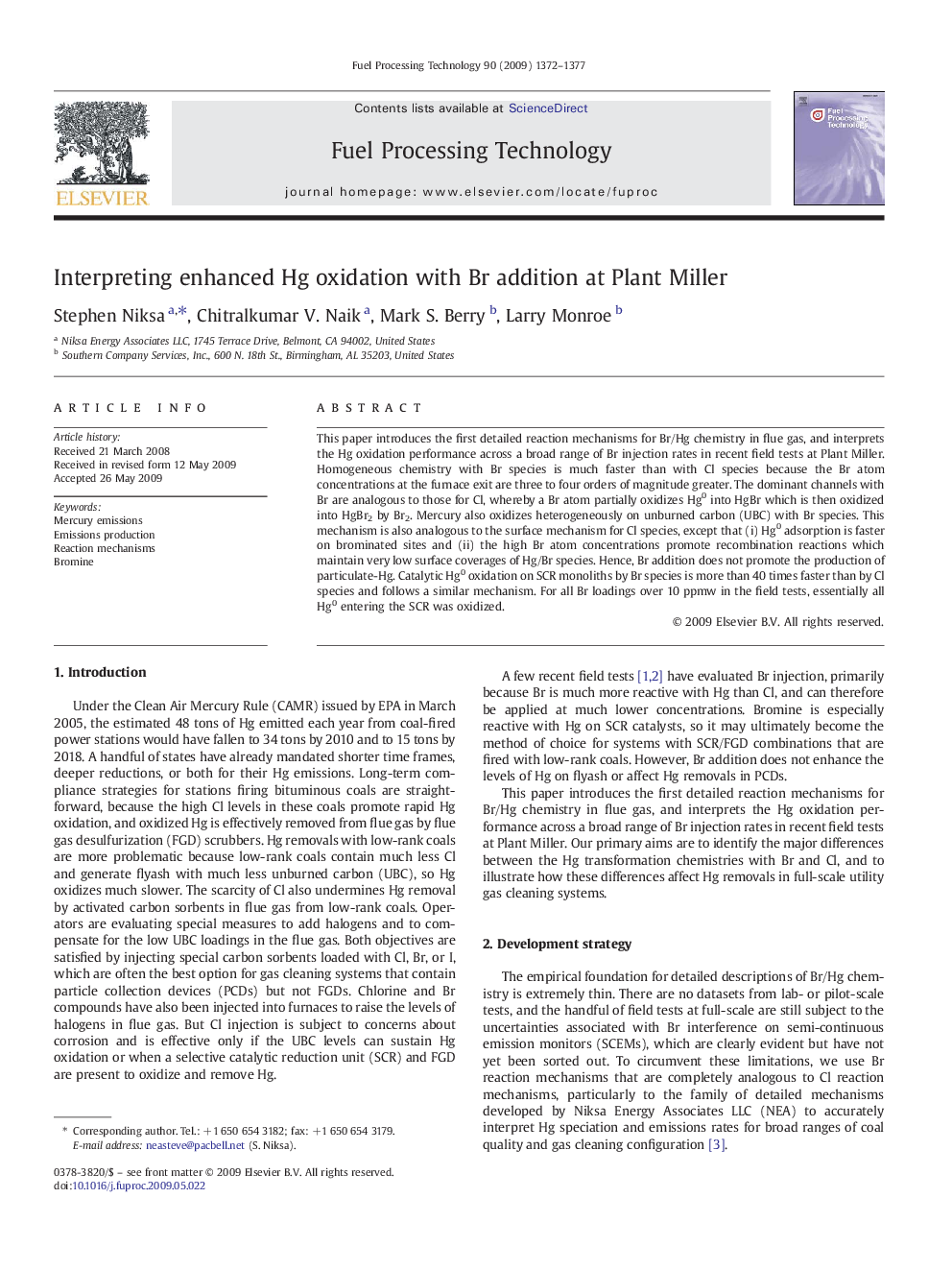| Article ID | Journal | Published Year | Pages | File Type |
|---|---|---|---|---|
| 211006 | Fuel Processing Technology | 2009 | 6 Pages |
This paper introduces the first detailed reaction mechanisms for Br/Hg chemistry in flue gas, and interprets the Hg oxidation performance across a broad range of Br injection rates in recent field tests at Plant Miller. Homogeneous chemistry with Br species is much faster than with Cl species because the Br atom concentrations at the furnace exit are three to four orders of magnitude greater. The dominant channels with Br are analogous to those for Cl, whereby a Br atom partially oxidizes Hg0 into HgBr which is then oxidized into HgBr2 by Br2. Mercury also oxidizes heterogeneously on unburned carbon (UBC) with Br species. This mechanism is also analogous to the surface mechanism for Cl species, except that (i) Hg0 adsorption is faster on brominated sites and (ii) the high Br atom concentrations promote recombination reactions which maintain very low surface coverages of Hg/Br species. Hence, Br addition does not promote the production of particulate-Hg. Catalytic Hg0 oxidation on SCR monoliths by Br species is more than 40 times faster than by Cl species and follows a similar mechanism. For all Br loadings over 10 ppmw in the field tests, essentially all Hg0 entering the SCR was oxidized.
